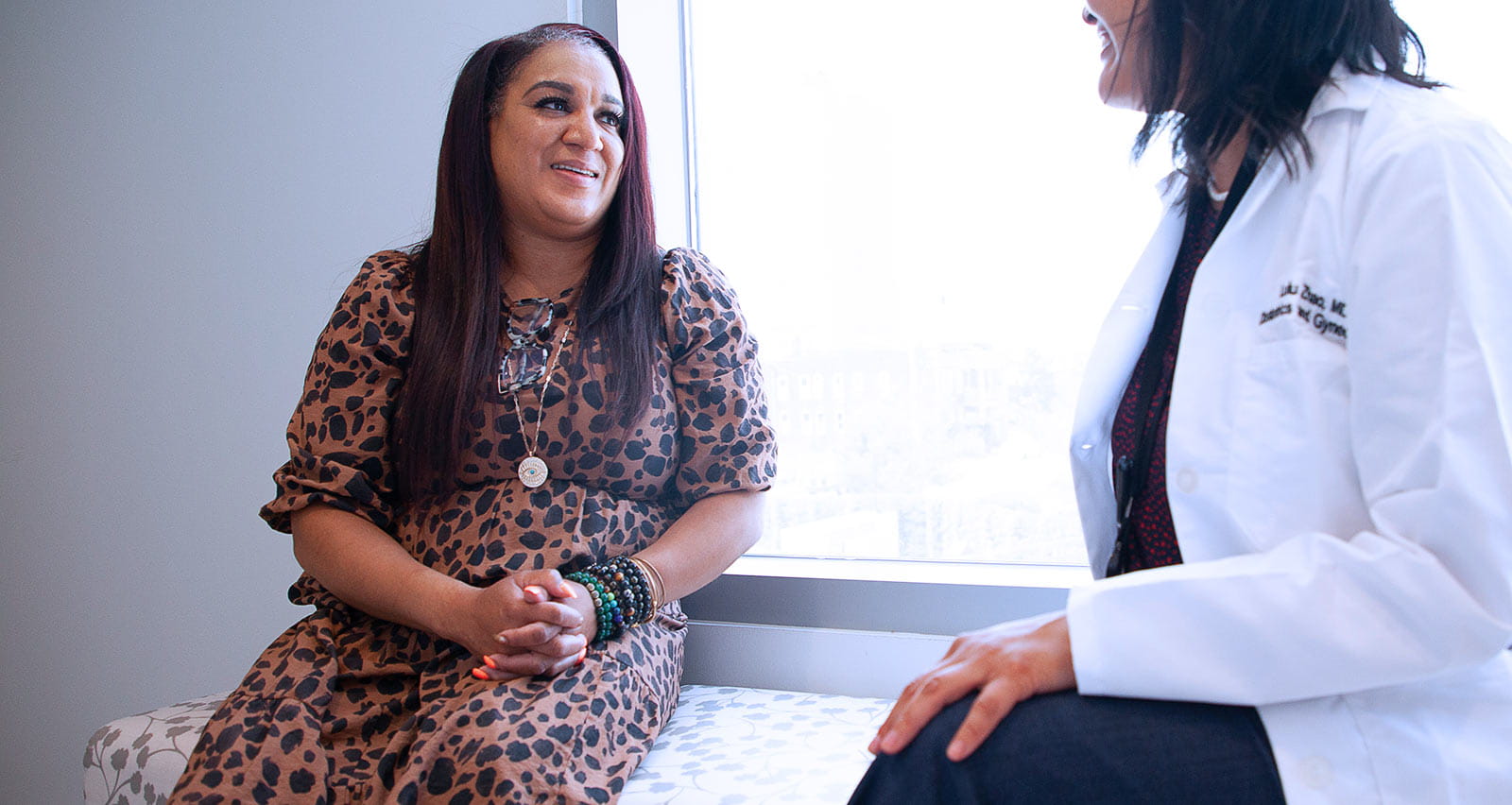
Adenomyosis
Adenomyosis is a condition in which the lining of the uterus, or endometrial tissue, invades the uterine muscle. Adenomyosis can lead to an enlarged uterus and can also cause heavy menstrual bleeding. The expert OB/GYN and women’s health providers at University Hospitals are experienced in diagnosing and managing adenomyosis with both surgical and non-surgical treatment options.
Make an Appointment with a Women’s Health Expert
Schedule online or call 216-844-3941 to make an appointment with a UH OB/GYN provider.
During a woman’s menstrual cycle, the endometrium grows thicker as the body prepares for a possible pregnancy. If no pregnancy occurs, the endometrial tissue is shed during the menstrual period. However, when a woman has adenomyosis, some of the endometrial tissue began to invade the wall of the uterus, called the myometrium. This can cause the uterus to become enlarged, growing to double or triple its usual size.
Adenomyosis Symptoms
Many women with adenomyosis may not even know they have it because it doesn’t always cause symptoms. Common symptoms associated with adenomyosis include:
- Painful periods (dysmenorrhea)
- Heavy or prolonged periods
- Menstrual bleeding with clots
- Abdominal or pelvic pain
- Painful intercourse (dyspareunia)
- Abdominal bloating
- Infertility or miscarriage
Complications of adenomyosis can include anemia from heavy or prolonged menstrual bleeding. Symptoms of anemia can include fatigue, dizziness, fainting and shortness of breath.
Causes and Risk Factors
Experts are not sure about the exact cause of adenomyosis. Possible causes include genetics, hormone issues, or inflammation or trauma to the reproductive organs.
Risk factors include:
- Age: Adenomyosis often develops later in the childbearing years, between ages 40 and 50.
- Childbirth: Having given birth at least once can increase your risk.
- Previous uterine surgery: This can include procedures such as fibroid removal, C-section or dilation and curettage (D&C).
- Endometriosis: Women with inflammation due to endometriosis may be more likely to have adenomyosis.
How is Adenomyosis Diagnosed?
To diagnose adenomyosis, women’s healthcare providers at UH use a few different exams and tests. The first step is usually a physical examination. During the exam, the provider will review the patient’s symptoms and conduct a pelvic exam to look for abnormalities. Additional tests may include:
- Ultrasound: This test uses sound waves to visualize the uterus, look for signs of adenomyosis, and rule out other conditions such as fibroids or endometriosis.
- Imaging scans: Tests such as magnetic resonance imaging (MRI) can be used to confirm adenomyosis through visualization of an enlarged or thickened uterus.
- Biopsy: Collecting and testing a tissue sample can be used to rule out more serious conditions such as cancer.
Treating and Managing Adenomyosis
If there are no bothersome symptoms, adenomyosis may not require treatment. However, if pain, heavy bleeding and other symptoms are interfering with your life, there are both medical and surgical options for managing symptoms. Women may also choose to undergo treatment if adenomyosis is affecting their ability to get pregnant or stay pregnant.
Adenomyosis management and treatment options include:
- Pain medication to ease cramping and other menstrual-related pain. This can include nonsteroidal anti-inflammatory drugs (NSAIDS) such as ibuprofen or naproxen.
- Hormonal contraceptives: Birth control pills, injections, or hormonal intrauterine devices (IUDs) can help with the heavy menstrual bleeding of adenomyosis.
- Tranexamic acid: This non-hormonal medication can treat heavy menstrual bleeding.
- Hysterectomy: This surgery removes your uterus, stopping your menstrual cycle.
Without treatment, the symptoms of adenomyosis usually go away after menopause. Post-menopausal women may still have an enlarged uterus as a result of adenomyosis.
Make an Appointment with a Women’s Health Expert
Schedule online or call 216-844-3941 to make an appointment with a UH OB/GYN provider.


